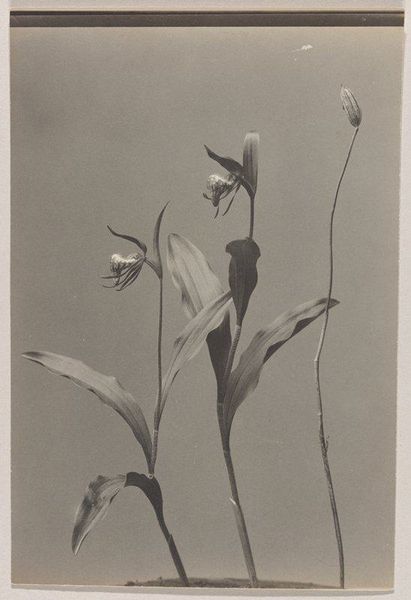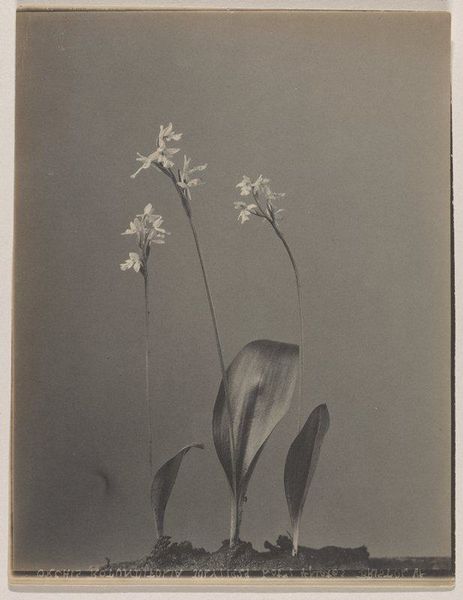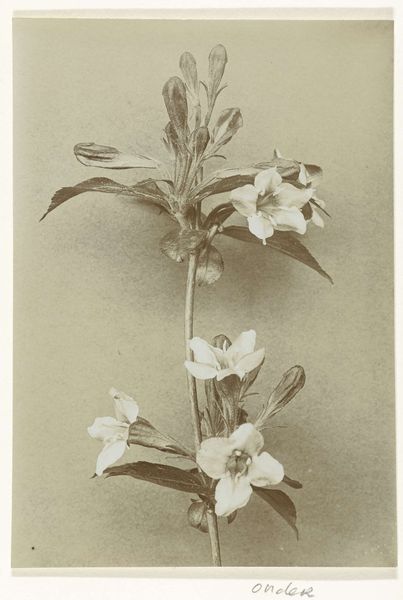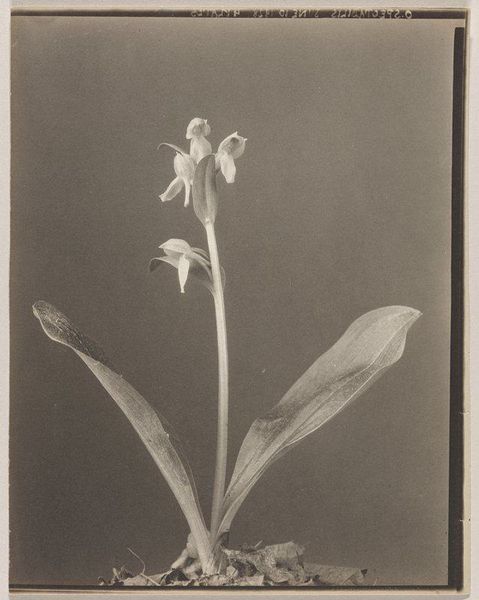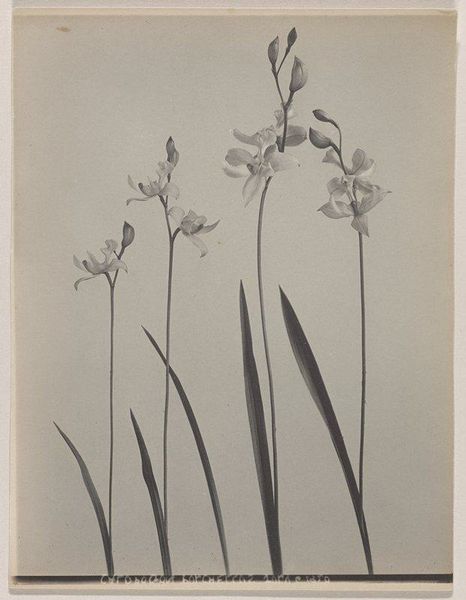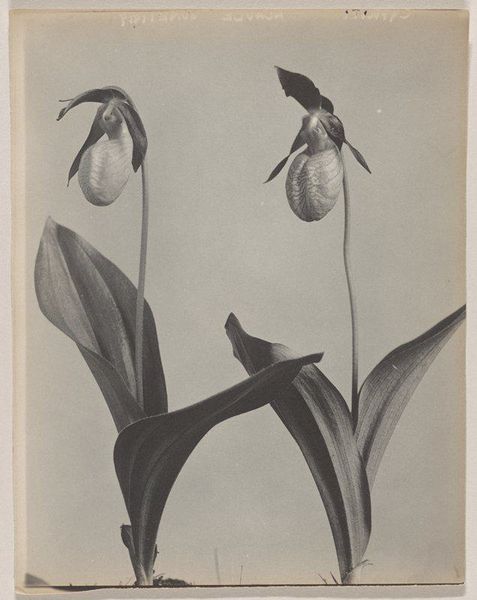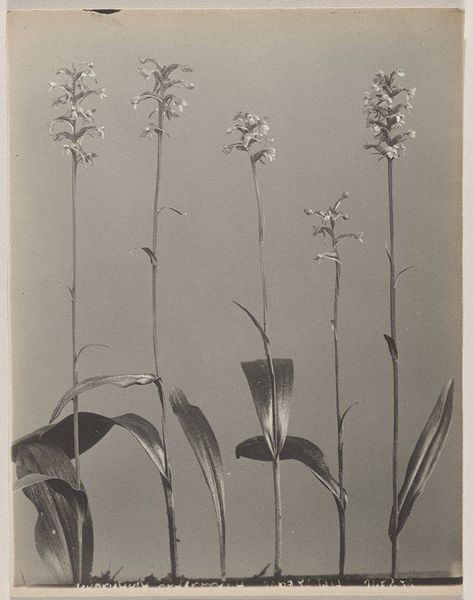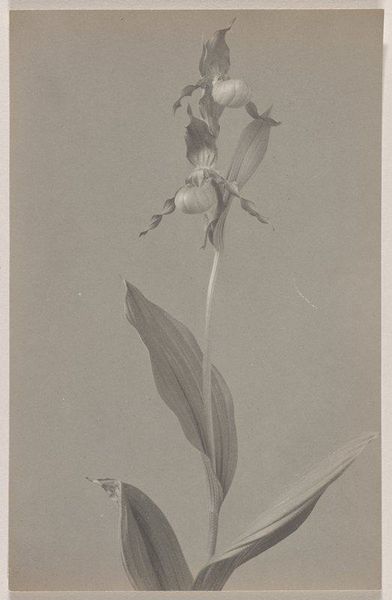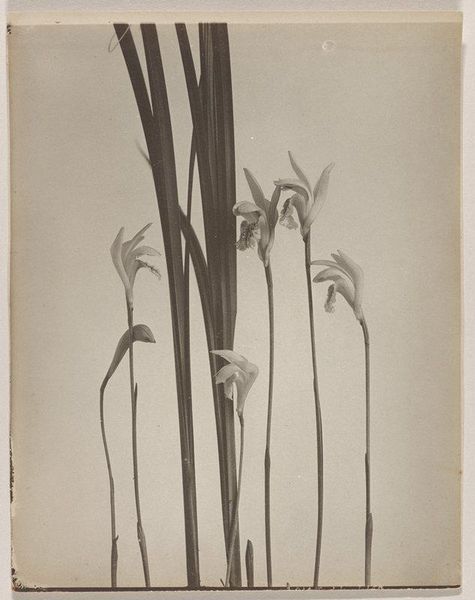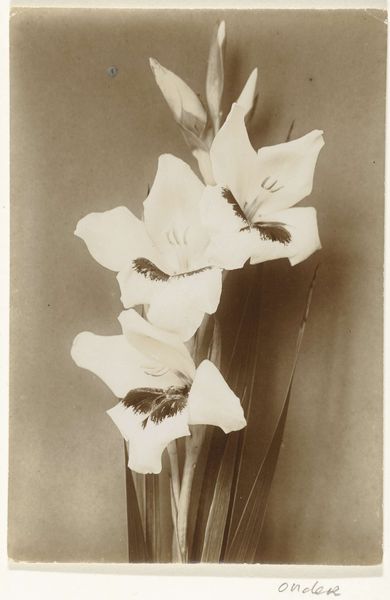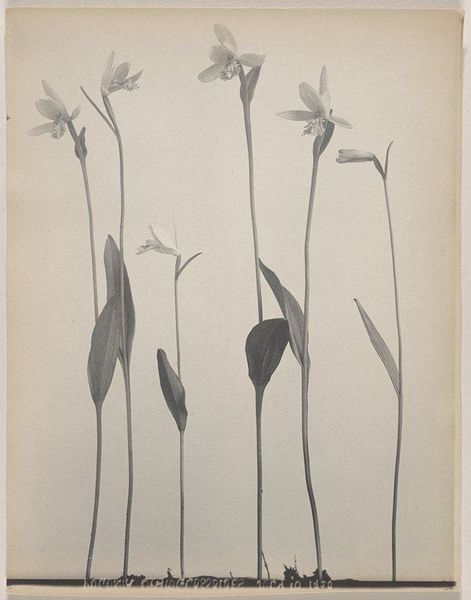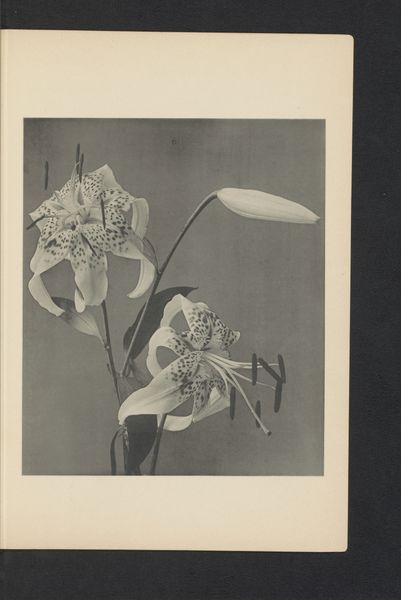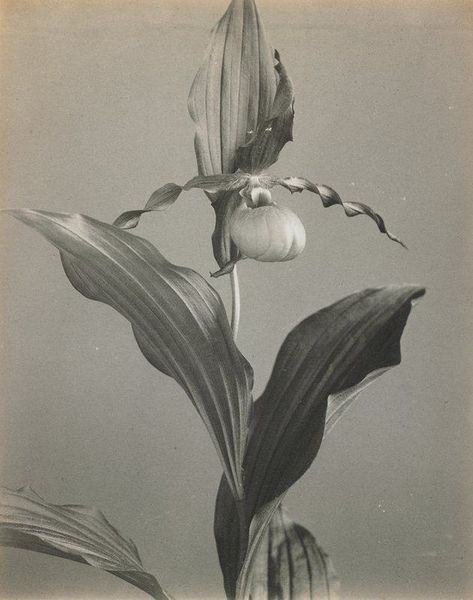
Cypripedium reginae- The Queen of the Moccasin Flowers 1931
0:00
0:00
photography, gelatin-silver-print
#
still-life-photography
#
landscape
#
photography
#
gelatin-silver-print
#
united-states
#
watercolour illustration
#
botanical art
#
watercolor
#
realism
Dimensions: 9 7/16 x 7 11/16 in. (23.97 x 19.53 cm) (image)9 15/16 x 7 11/16 in. (25.24 x 19.53 cm) (sheet)
Copyright: No Copyright - United States
Editor: Here we have Edwin Hale Lincoln's 1931 gelatin-silver print, "Cypripedium reginae - The Queen of the Moccasin Flowers," from the Minneapolis Institute of Art's collection. The monochromatic palette and the tight cropping create such an intimate and focused perspective. What catches your eye in this image? Curator: Formally, the interplay of light and shadow sculpts the composition. Note how Lincoln meticulously renders the textures – the velvety smoothness of the petals juxtaposed against the pronounced venation of the leaves. Observe also the arrangement: a pyramidal structure lends a sense of classical stability. Do you find any tension in this structured presentation? Editor: Now that you mention it, yes. There's a rigid stillness. Even though it’s a flower, it feels like a formal portrait. Curator: Precisely. Consider how the limited tonal range abstracts the subject. It reduces the flowers and foliage to a study of form. The emphasis shifts from botanical documentation to an exploration of shape, light, and surface. The frame acts as a sort of stage. What effect does that staging have on you, the viewer? Editor: It detaches the plant from nature. I see the subject itself as being about the form. Thank you; I hadn't quite noticed the way this image made me separate the flower from my expectations. Curator: It reveals that even a photograph can prioritize intrinsic artistic qualities. An appreciation for art, regardless of representation. Editor: Right, so instead of it being a botanical study, the picture becomes more of an essay in contrast. Curator: Indeed, Lincoln transforms a botanical subject into an aesthetic exercise. Editor: I see that now. Focusing on the structural elements gives me a new angle from which to approach photography as an art form.
Comments
No comments
Be the first to comment and join the conversation on the ultimate creative platform.
